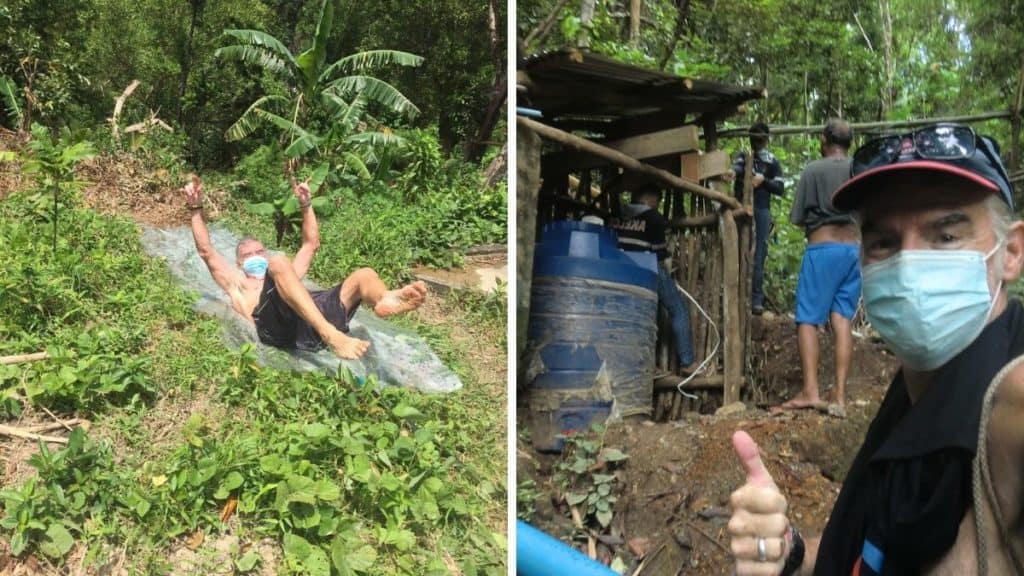Last Updated on June 8, 2023 by Ellen
Take a look at yours truly – a 58-year-old fool – cruising down the homemade slip-‘n-slide we made here in the Philippines.
Note the proper COVID protocols: face mask, social distancing, and hand/body washing, too.
The moment of silliness was actually part of a very serious and necessary process involving the water system we recently completed with the indigenous Ati tribe here in Malay, Aklan, on the island of Panay.
It’s been more than two months since we installed an electric pump and began the daily pumping of drinking water from a freshwater spring source to a holding tank. From the holding tank, the water is then piped out, using gravity, to a handful of community spigots where Ati tribe members can easily fill containers.
The pump-tank-pipe set-up eliminates the need for the Ati to walk the steep, slippery, uneven hillside trail down to the spring — then back up hauling heavy water jugs — as they have had to do for years.
Water tank cleaning
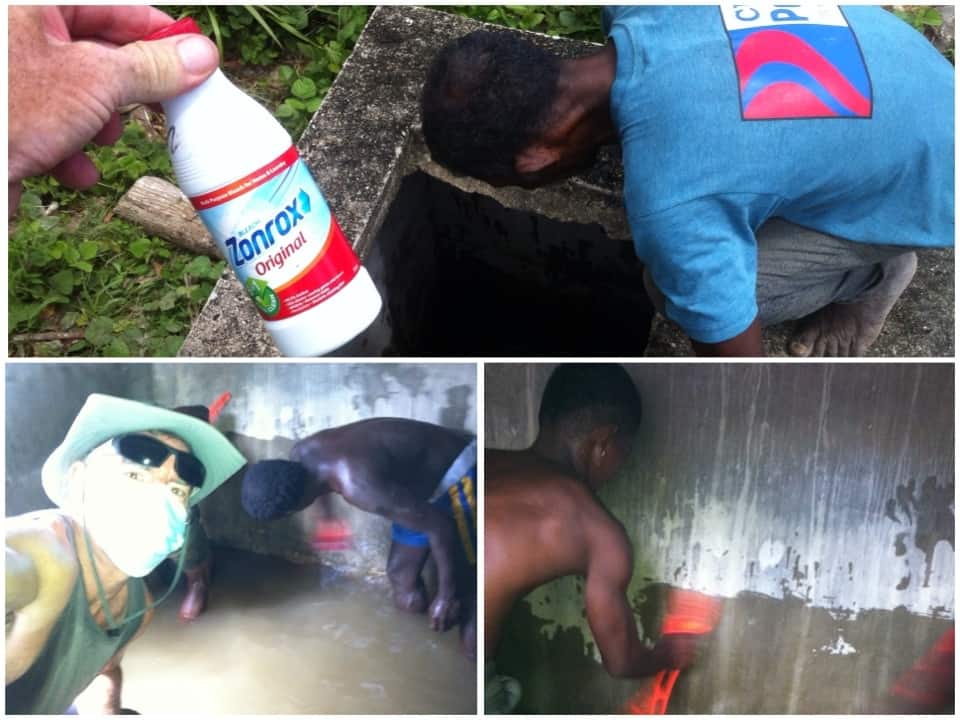
I’m happy to report the system has been working well. But periodically, the concrete holding tank (built a decade ago but then unused) needs to be cleaned.
The photos above show myself and a couple young Ati guys inside the tank where we easily scrubbed away a slight buildup of algae that had appeared around the water line.
Of course, we first shut off the outflow valves and opened the ‘main drain’ of the tank to dispose of the wash-water and rinse that contained a moderate amount of bleach.
And that’s where the slip-‘n-slide comes in. Instead of just dumping the hundreds of gallons of wash and rinse water, we attached a hose and ‘repurposed’ it down a 20 foot sheet of plastic.
The overflow
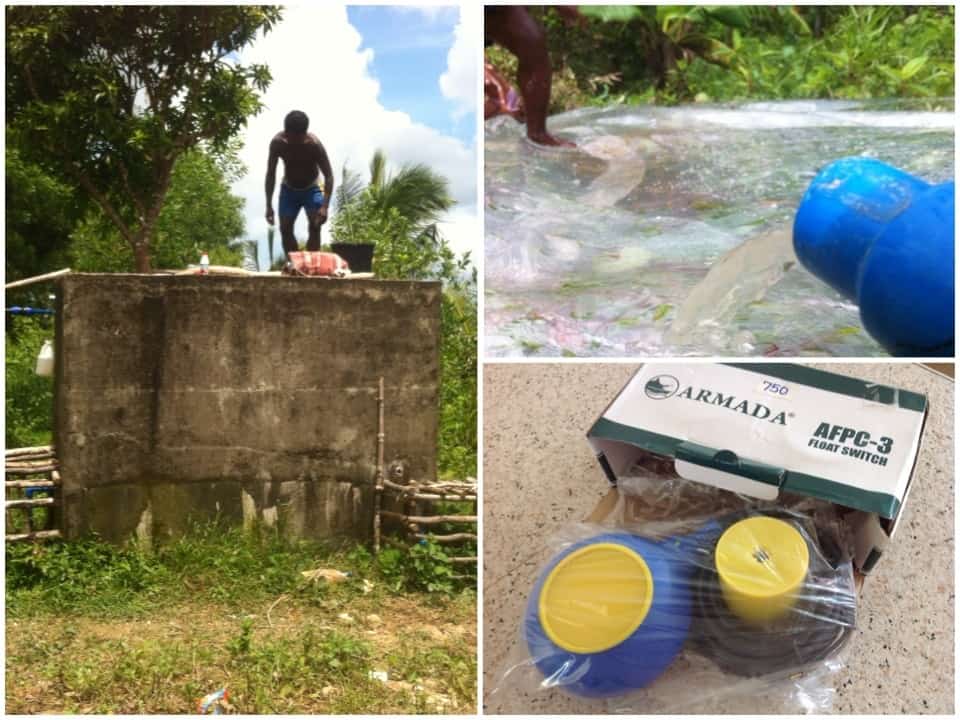
As stated above, the pump, storage, and distribution system has been mostly trouble free. After addressing a few leaking pipe fittings at the beginning, the convenience of tap water has become a very welcome part of daily Ati life.
There was, however, one recent occurrence that caused some alarm.
Included in the system design is a ‘float switch’. Basically, an automatic on/off switch. The float switch is located down at the source – attached to the pump itself.
If the water level ever gets too low — where there is a danger of the pump ‘running dry’ — the float switch acts as an emergency shut-down and turns off the pump before any damage might occur.
On one occasion, this emergency shut-off was activated — repeatedly.

The normal daily morning procedure is for one of the trained Ati ‘elders’ to turn on the pump using the electrical breaker, allow the tank to fill with about 650 to 700 liters of drinking water, then turn the breaker back off. The whole process takes about 30 minutes.
On one particular day, the pump operator was somehow distracted and wandered off while the pump was on. Many hours later – some panic; someone noticed water overflowing from the huge concrete holding tank.
Normally, the daily 700 liters only fills the holding tank to about 20 percent of capacity. That’s all that is needed each day. Now water was pouring out the top. At least 5,000 liters had been pumped into the tank.
When the overflow situation was noticed, the breaker was quickly shut off. Thankfully, although numerous cycles of excess water had been pumped up throughout the day, no damage was done.
Each time the source water level got too low, the float switch shut everything down. Once the source level filled up again (which takes about an hour), the float switch would automatically turn on the pump and send another 700 liters up to the holding tank. Obviously, this went on for hours. Eventually the holding tank overflowed.
After the accidental event, there did appear some extra seepage from the big old concrete tank. We also noticed some drips from some of the PVC pipe fittings and valves. Such might be expected due to the greatly increased pressure created by all that extra water.
Luckily, over the ensuing days, as the water was used and the tank emptied back to normal operating levels, the issues caused by the increased water pressure/weight dissipated.
Going forward, the pump operators will be more attentive. And we are all thankful for the properly functioning float switch. As far as the system design – it worked perfectly.
A different project consultation
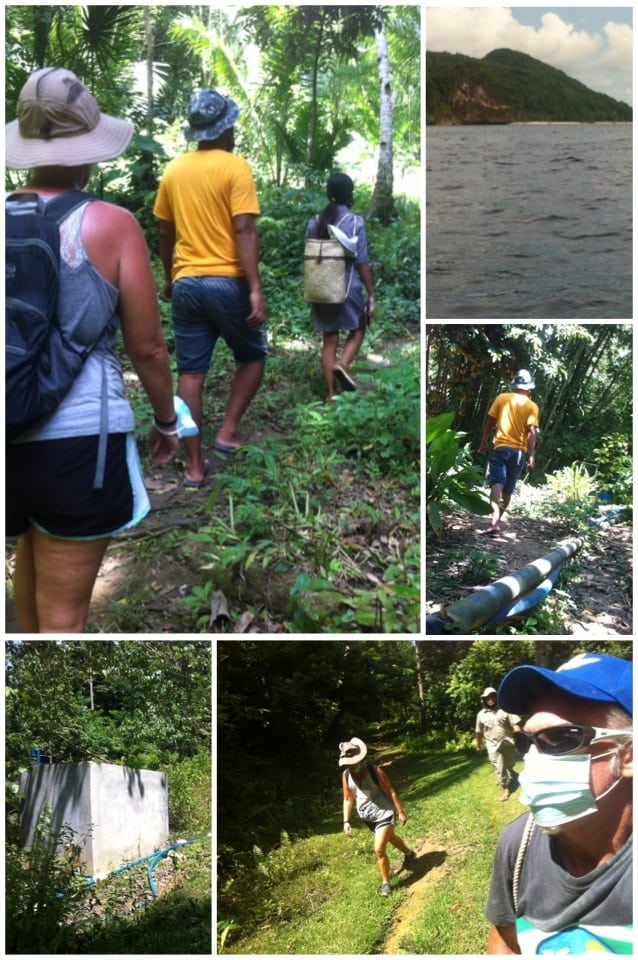
Finally, kinda like the slip-‘n-slide, there’s another water development that has bemused me.
Our blog posts about the Ati water pump project were noted by local Filipino activists who also donate their time and resources toward bettering the less fortunate.
As a result, we were contacted to consult on a drinking water availability problem in another ‘remote’ community. We were flattered to be viewed as ‘knowledgeable’ on the topic and we’re now involved in potential solutions.
In fact, as seen in the photos here, Ellen and myself both made an hours-long hike to see first hand this other drinking water source. And on different individual visits, we’ve been to the isolated beach community in need – and to the water storage/transmission facilities in the equation.
Truth be told, while it’s nice to be thought of as an ‘expert’ on rural drinking water problems, I hardly qualify. Instead, I smartly involved a real water expert – my friend Erick (King), who works for the local municipal water company.
King and I most recently met with the barangay captain (city councilman) from the community in question and we are now weighing and considering a few different possible options.
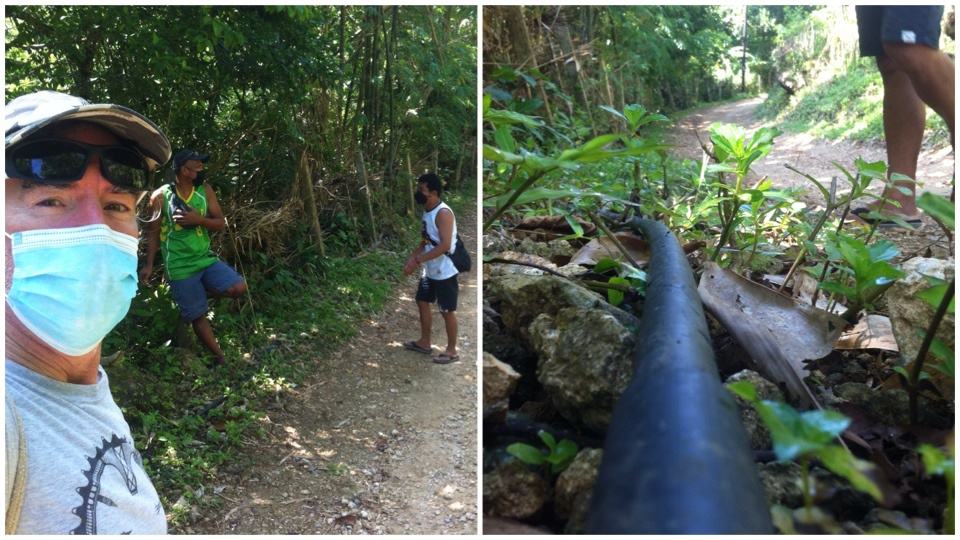
Actually, I may also again call upon the contacts I made at Case Western Reserve University back in Cleveland, Ohio, USA, who were extremely helpful as we designed the Ati pump system.
The hydraulic and environmental engineers at CWRU (my alma mater) are mathematical wizards and can undoubtedly offer sound input and guidance on these new water woes. More details, coming soon.
As always, be thankful and generous (like our overseas contributors), happy trails & more beer.
Life is NOW!
Thanks for reading, “Water slide, water work, water help for Filipinos.”
Budget-minded posts about living in the Philippines during the pandemic:

